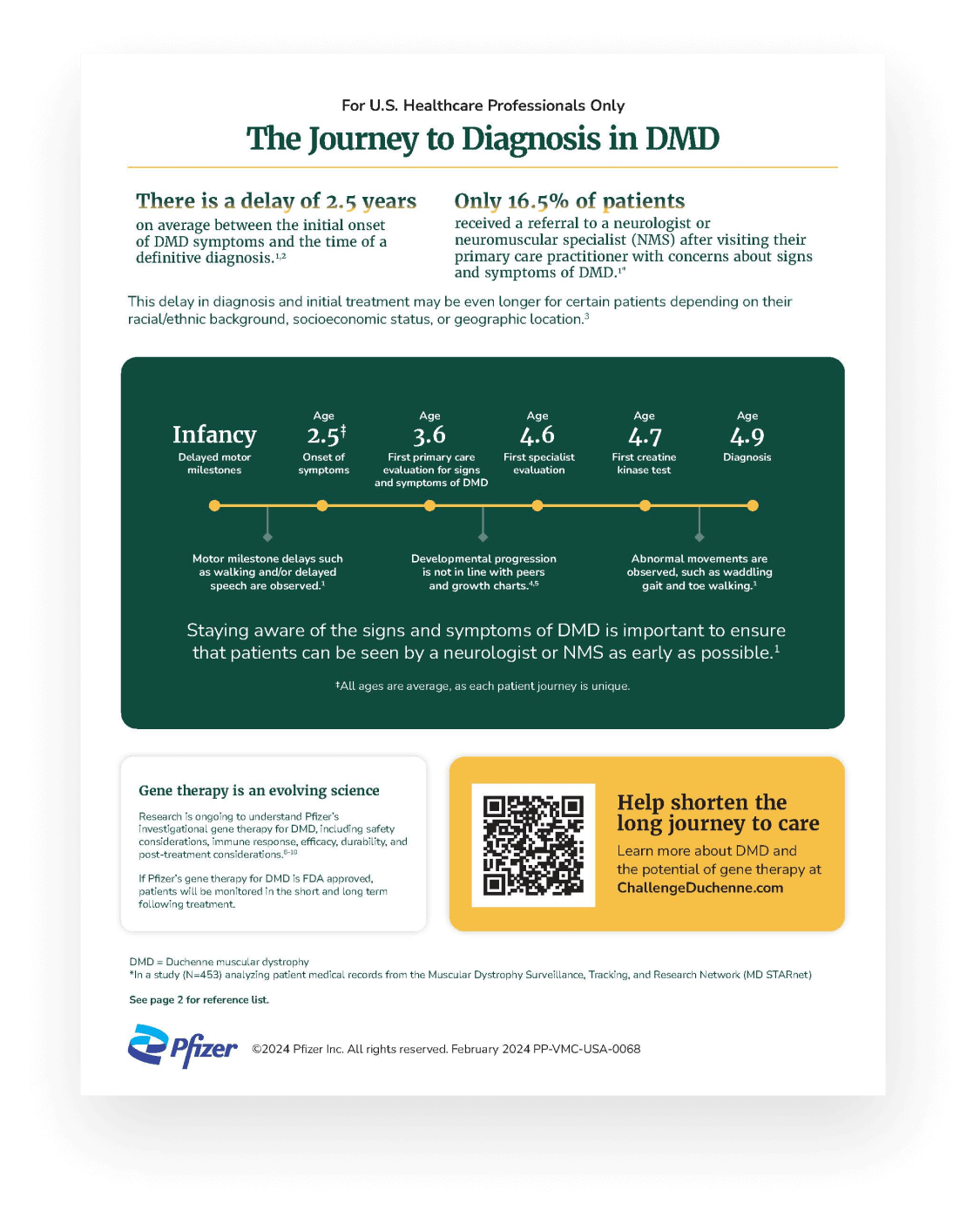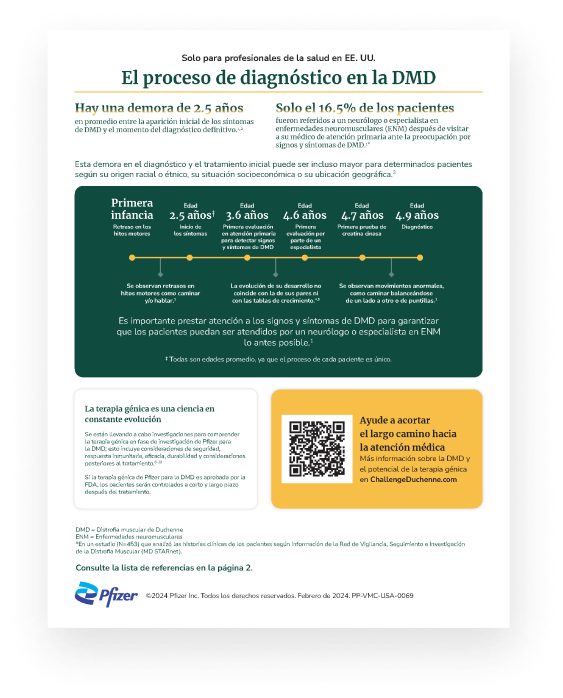Help shorten the long journey to care
Staying aware of the signs and symptoms of DMD is important to ensure that patients can be seen by a neurologist or NMS as early as possible.11




By targeting the disease at the genetic level, innovations like gene therapy may be an option for appropriate patients with DMD.1,5
The time required to manage appointments and administrative tasks is significant5
Based on an international survey of 770 patients and their caregivers,
~27%-49%
of caregivers had to stop working to care for a child with DMD6,7
DMD affects boys at the rate of
live male births9
Non-Hispanic White and Hispanic individuals were about twice as likely to be diagnosed with DMD as non-Hispanic Black individuals10
This delay in diagnosis and initial treatment may be even longer for certain patients depending on their racial/ethnic background, socioeconomic status, or geographic location.13
Delayed motor milestones
Onset of symptoms
First primary care evaluation for signs and symptoms of DMD
First specialist evaluation
First creatine kinase test
Diagnosis
*All ages are average, as each patient journey is unique.
Staying aware of the signs and symptoms of DMD is important to ensure that patients can be seen by a neurologist or NMS as early as possible.11




By targeting the disease at the genetic level, innovations like gene therapy may be an option for appropriate patients with DMD1,16
Research is ongoing to understand Pfizer’s investigational gene therapy for DMD, including safety considerations, immune response, efficacy, durability, and post-treatment considerations.1,17-20
If Pfizer's gene therapy for DMD is FDA approved, patients will be monitored in the short and long term following treatment.